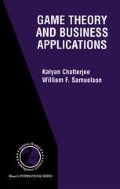Conclusion
The purpose of activity rules is to encourage convergence to an efficient outcome by suppressing gaming. The rules proposed here are based on the principle of “revealed preference.” Essentially, a supplier’s refusal to improve a previous clearing price is taken as evidence that such a lower price would not recover its cost, and that therefore it can be prohibited from offering this price later. The resulting process forces suppliers at the margin to compete: each extra-marginal bidder improving the previous clearing price ejects some infra-marginal bidder who is thereby forced to reduce its offered price or forego any profit it might obtain. Each refusal freezes a step of the tender, until possibly the clearing price rises that high again later.
These rules are complemented by procedures for opening and closing the auction, and allowance for withdrawals. All tenders must be submitted at the opening to preclude a strategy of waiting until the final iteration that would impair price discovery. Withdrawals must be irrevocable and in any case withdrawals after the final iteration must be excluded.
The small-scale experimental tests conducted by Charles Plott (1997) indicate that, absent market power, these activity rules suppress gaming and drive the iterative process to nearly efficient prices and quantities in a moderate number of iterations.
Access this chapter
Tax calculation will be finalised at checkout
Purchases are for personal use only
Preview
Unable to display preview. Download preview PDF.
References
McCabe, K.S., S. Rassenti, and V. Smith (1993), “Designing a Uniform-Price Double Auction: An Experimental Evaluation,” Chapter 11 in D. Friedman and J. Rust (Eds.), The Double Auction Market, Addison Wesley.
Plott, C. (1997), “Experimental Tests of the Power Exchange Mechanism,” Report to the California Trust for Power Industry Restructuring, (www.energyonline.company/wepex/reports/reports2).
Editor information
Editors and Affiliations
Rights and permissions
Copyright information
© 2002 Kluwer Academic Publishers
About this chapter
Cite this chapter
Wilson, R. (2002). Activity Rules for an Iterated Double Auction. In: Chatterjee, K., Samuelson, W.F. (eds) Game Theory and Business Applications. International Series in Operations Research & Management Science, vol 35. Springer, Boston, MA. https://doi.org/10.1007/0-306-47568-5_12
Download citation
DOI: https://doi.org/10.1007/0-306-47568-5_12
Publisher Name: Springer, Boston, MA
Print ISBN: 978-0-7923-7332-2
Online ISBN: 978-0-306-47568-9
eBook Packages: Springer Book Archive

